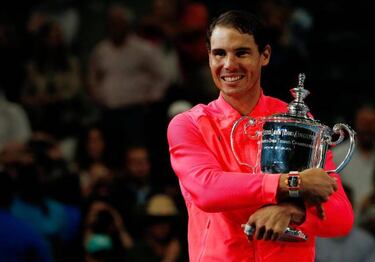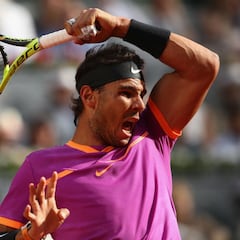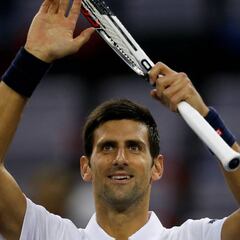Nadal-Anderson: as it happened
The world number one put on a professional display to dispatch major final debutant Kevin Anderson in straight sets at Flushing Meadows.</br><a title="Ryder Cup 2018 final day live: Europe vs USA, Sunday singles" href="https://en.as.com/en/2018/09/30/other_sports/1538308334_223057.html">Ryder Cup 2018 final day: Europe vs USA, Sunday singles</a>
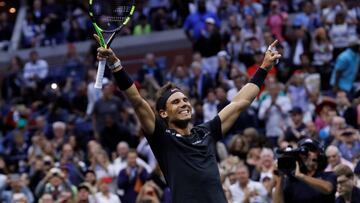
Rafa Nadal confirmed his return to his omnipotent best at Flushing Meadows as he claimed his third US Open title and 16th Grand Slam overall with a straight sets defeat of Kevin Anderson.
At the outset of 2017 it had been two and a half years and a series of debilitating injuries since the world number one had been in the final of a major tournament. Nine months later he has featured in three of this year’s Grand Slam finals, winning in Paris and New York and losing in five sets to an inspired Roger Federer in Melbourne.
As both players struggled with physical problems last season the question being asked was whether either could return to the summit of the game and if it turn it was time for the younger generation of players to finally make their mark. Now Nadal and Federer hold all four major titles and the respective ranks of one and three in the world.
Rising stars failed to capitalise at US Open
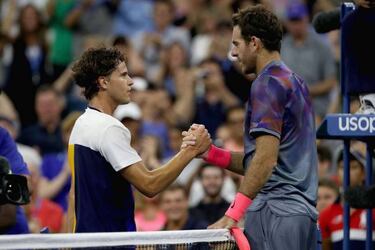
At this year’s US Open it was anticipated that some of those up-and-comers would rise up in rebellion against the established order as was the case in the women’s draw with Serena Williams and Victoria Azarenka among the high-profile absentees.
Novak Djokovic and reigning champion Stan Wawrinka had ruled themselves out and Andy Murray withdrew on the eve of the tournament. Nadal and Federer were installed as pre-tournament favourites but it would be other members of the old guard that would provide the challenge.
Juan Martín del Potro hauled himself through an epic five-setter against the cream of the callow crop, Dominic Thiem, and then dispatched Federer in four to set up a semi-final meeting with Nadal, depriving New York once again of witnessing two of the greatest players in history face off at Flushing Meadows. Few would now bet against it finally happening next year.
In the other half of the draw, Anderson rose to the surface at the age of 31 as the likes of Denis Shapovolov, Alexander Zverev and the more established David Goffin and Pablo Carreño Busta burned brightly but failed to last the course.
And so for just the seventh time in the Open Era, two players aged over 30 contested a Grand Slam final. It was Nadal, though, who looked like he was 10 years younger.
Nadal too good for Anderson
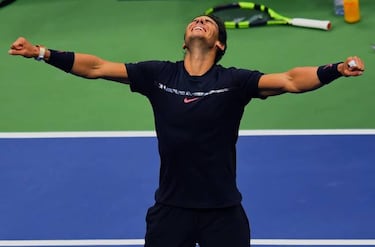
Anderson had dropped serve just five times during his run to the final but was broken twice in the opening set as Nadal covered every inch of Arthur Ashe to retrieve the South African’s punishing ground strokes. Quicker than he has been in some time, the Spaniard also showed incredible consistency on his serve: Anderson did not force a single break point opportunity.
After an opening set lasting 58 minutes, the players whittled through the second in 39 minutes as Anderson found a little more groove on his serve but failed to make so much as the slightest dent on his opponent’s, winning just 21 percent of receiving points to Nadal’s 42.
But it was the unforced error count that would prove Anderson’s undoing. Intent on keeping punishing rallies against one of the game’s greatest retrievers, the South African blasted 40 to Nadal’s 11, with only two more winners to show for it than his opponent (32-30).
Related stories
Nadal also proved as devastating inside the court as in his natural baseline habitat, winning 16 of 16 points at the net as he mixed up his approach – backed by his incredible movement throughout the game – to crush Anderson’s resistance.
Widely considered the greatest clay court player of all time, Nadal proved that an old dog can learn new tricks in New York. His four previous titles of the season all came on clay, in Monte Carlo, Barcelona, Madrid and Roland Garros. Before New York, where Björn Borg could never crack the US Open conundrum, he hadn’t won a title on a hard court since Doha in January 2014.
